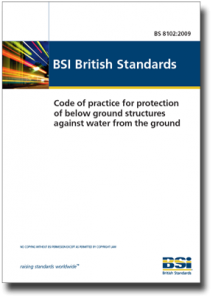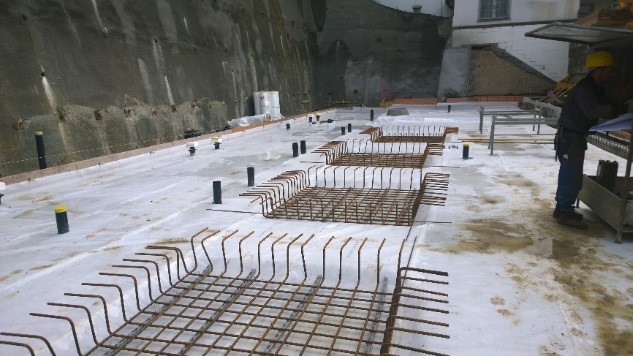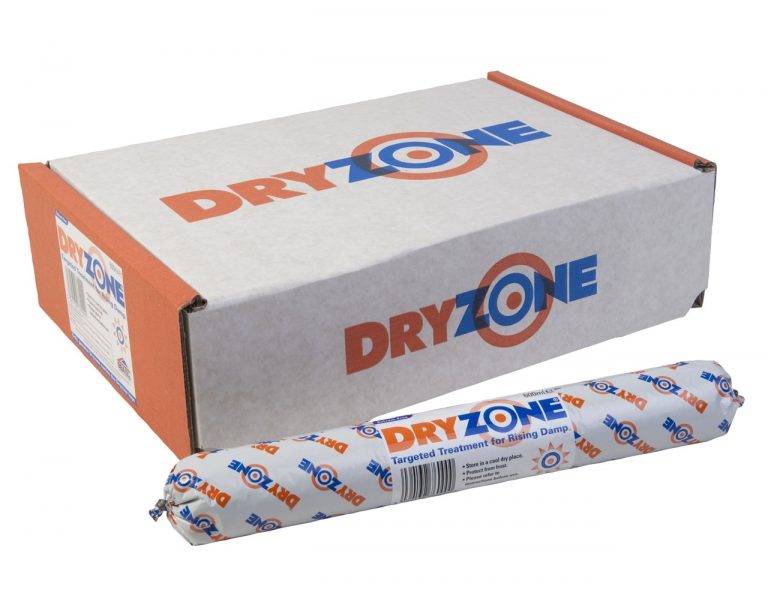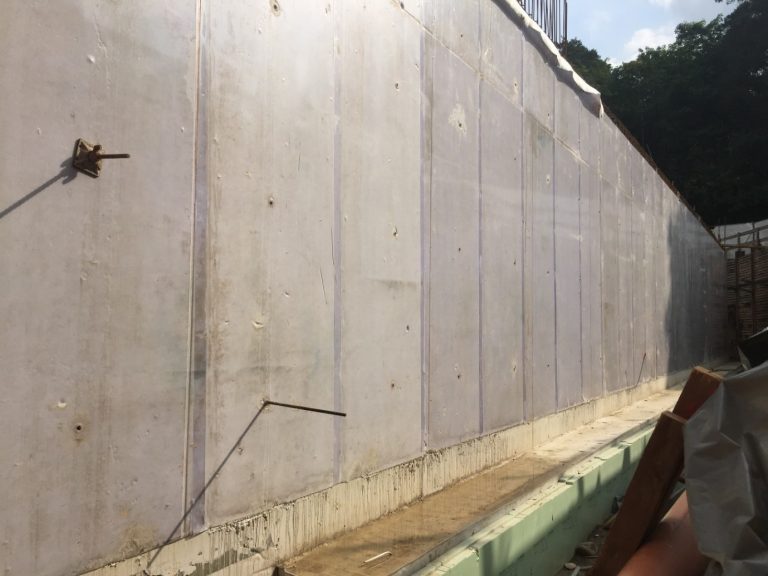Basement waterproofing can be proven to be challenging with so many opportunities for error: in design, during construction, and throughout operation. Developing a thorough design by taking into account all the aspects is the obvious first choice for waterproofing success.
Reduced availability and increasing value of urban land has led to the need for the maximum utilisation of available space in new-build construction. As there are lateral limitations on most sites the easiest way to maximise available space is to either build up or down. The use of basements or below ground concrete structures, in which ever form, have become more proliferate in modern construction.
For all its obvious advantages, building below ground is not without its potential dangers as the concrete substructure is exposed to ground water conditions, changing water tables, possible soil movement, and changing environmental conditions. Remedial activities are both difficult and expensive in terms of access to and treatment any potential leaks; thus, it is very important that due care and consideration are taken in the design, planning, selection, and installation of the structural waterproofing system.
According to the deputy director of the PCA (the Property Care Association), surveyor Stephen Hodgson: “In extreme cases, a poorly waterproofed basement can be subject to catastrophic flooding, which could destroy all the contents of the room. More commonly, simple dampness of the atmosphere can make the space cold, uninviting and cause deterioration of items sensitive to damp”. *
BS 8102:2009 (Code of practice for protection of below ground structures against water from the ground), provides the basis for basement waterproofing design. The code describes three forms of construction (Type A, Type B, and Type C) that can be employed when creating dry rooms below ground.

Type A (Barrier Protection) is usually referred to as “tanked protection”. Such structures rely on a waterproofing membrane to keep water out and have no integral protection against water penetration. A waterproofing membrane may be applied internally or to the outside of the structure or, in some cases, sandwiched between two skins of masonry or concrete.
Type A waterproofing is ideally suited to many types of waterproofing projects in both new build and renovation. However, product selection, design and application are critical, as cracking, structural movement or mechanical damage following the application of the system will compromise the integrity of Type A protection.
Structures built with a water-resistant shell are referred to as Type B (structurally integral protection) waterproofing systems. These will usually be constructed out of reinforced concrete to an appropriate design code (such as BS 8110 or BS 8007), which provides guidance in the grade of concrete to be used and spacing of the reinforcing steel.
This type of waterproofing system is predominantly used in new build basements. Should a Type B system fail, then a Type A or Type C system is usually utilised to affect a remedy.
Type C (drained protection) systems are common in basement renovations and conservations. Type C systems rely on a drained cavity within the basement structure. There is a permanent reliance on the cavity to collect groundwater that enters through the fabric of the structure. The drainage system directs the water to a drain or sump, where it can be removed from the building by gravity or pumping.
Consideration should be given to the use of combined protection** (i.e. Type A and Type B, Type A and Type C, or Type B and Type C) where in a single system:
- The assessed risks are deemed to be high;
- The consequences of failure to achieve the required internal environment are too high;
- Additional vapour checks are necessary for a system where unacceptable water vapour transmission can occur.
The choice of waterproofing methods appropriate to the unique requirements of the build is vitally important and such a judgement is best undertaken by a specialist waterproofing surveyor (You Might Just Need a Structural Waterproofing Specialist).
The DualProof System (mechanically bonded concrete sealing membrane) provided by SURFASOLOGY is an example of Type A Barrier Protection system. DualProof provides complete protection against water, radon and soil contaminants for all below ground reinforced concrete structures.
For more information, please contact us on 01-8321005 or [email protected]
*”Waterproofing a Basement” by PCA (the Property Care Association)
** BS 8102:2009 (Code of practice for protection of below ground structures against water from the ground)






